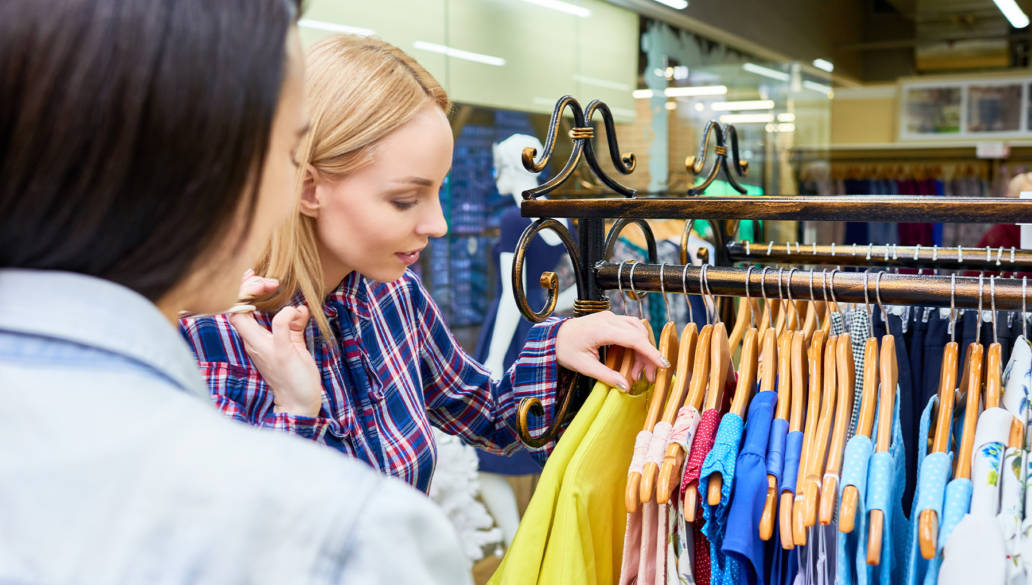Welcome to Venture Forge’s first in a new series of category insight articles, looking at key data and trends across specific product categories on Amazon.
Each month we’re planning to uncover a key category on Amazon, starting this month with Women’s Fashion, where we will take a deep dive into the makeup and importance of this category to Amazon and its’ sellers – covering key data points from sales volumes and values, through to winners, losers and the category shakers who are making a success of selling on Amazon.
If you have a brand and would like us to look at doing a deep dive on your category in the coming months, please feel free to get in touch.
Women’s fashion on Amazon – What’s it worth?
Women’s fashion on Amazon is a serious category, generating on average £3.8m to £4m of revenue per month (£45.6m to £48m annual) through the Top 40 to 60 items in each of its sub-categories.
Across all the items we have tracked and analysed, this equates to between 215,000 and 226,000 units of product being sold every 30 days, across a broad spectrum of womenswear categories covering footwear, nightwear, underwear, fashion, formal wear, basics and outerwear.
The best sellers in women’s fashion on Amazon
When we look at the best selling products on Amazon in womenswear, one of the biggest standouts is the dominance of footwear as a sub-category, with almost 24% of all revenue being on trainers, shoes, sandals or slippers.
This stands out even further when looking at individual best selling items where 4 out of the 5 best selling items on Amazon in womenswear are footwear, taking in excess of £38,000 each per month.
- Rocket Dog Jazzin Trainers – £64,000/month
- Roman Originals Cropped Trousers – £61,000/month
- Skechers Go Walk Trainers – £47,000/month
- Skechers Women’s Graceful-get Connected Sneaker – £42,000/month
- Crocs Women’s Swiftwater Sandal – £38,000/month
The top women’s fashion brands on Amazon
Looking across all womenswear categories, it’s clear that some recognisable brands are making a great success of selling on Amazon, but what stands out the most is the non-recognisable brands that are out-selling some household names, and how poorly performing some household names are.
The 10 best selling brands in Womenswear on Amazon UK are:
- Skechers – 7.1% market share
- Roman Originals – 4.2% market share
- Levi’s – 3.6% market share
- Iris & Lilly – 2.8% market share
- Rocket Dog – 2.3% market share
- ZANZEA – 2.2% market share
- Fitflop – 1.9% market share
- YOINS – 1.7% market share
- Romacci – 1.7% market share
- PUMA – 1.6% market share
Interestingly 4 to 5 of these brands aren’t brands that feature on the high-street, have no recognisable (traditional) brand awareness and are typically making their success through trading their product solely through Amazon and other marketplaces.
The strength of Amazon’s own brands (Iris and Lilly in the Top 10) also shows Amazon’s clear move into this category and play for fashion.
The success, and threat, of marketplace only brands is not to be underestimated, with many brands starting out on marketplaces and then moving into other channels.
How women’s fashion is sold on Amazon
Looking at Amazon’s various selling models (Amazon Vendor, Amazon Seller Fulfilled by Merchant and Amazon Seller Fulfilled By Amazon) there are some interesting splits across the category.
Nearly 39% of revenue is coming through Amazon’s FBA model with sellers opting to sell through Amazon, but letting Amazon handle their shipping to benefit from next day delivery and the prime badge.
The remaining revenue is split out as 35% of coming through lines sold by Amazon (either their own brands or Vendors) and the remaining 26% is through sellers shipping the items themselves.
The general trend across the category seems to be three-fold:
- Recognisable brands (i.e. Puma, Skechers) are operating on the Amazon Vendor model, where they see Amazon as a B2B sales channel and rely on their brand to sell their products.
- Non-recognisable brands or marketplace first brands (i.e. those more dependent on trading Amazon successfully) rely on Amazon Seller on the FBA model so they can trade and control their listings more effectively to drive sales, but want Amazon to handle fulfilment for ease and benefits of the Prime badge.
- Items under £10 are typically sold via Amazon Seller on the FBM model, due to the challenges of making a profit on the FBA model below the £10 price point.
The costs of selling women’s fashion on Amazon
Fashion on Amazon is one of the few categories on Amazon with a tiered pricing structure.
Whereas Amazon typically charges 15.3% of all sales generated, fashion operates on the following fee structure:
For Fulfilment by Amazon (FBA) and Seller Fulfilled Prime selections:
- 15.3% for the portion of the total sales price up to £40.00
- 7.14% for any portion of the total sales price greater than £40.00
For all other selections:
- 15.3% flat fee
Where Amazon offers a tiered fee structure, this typically shows their commitment to grow a category by incentivising sellers to bring new products to their platform to help drive that growth, or to reflect a margin challenge that the seller may be faced with.
Ways to win at women’s fashion on Amazon
Within any category, there are always ways that a new or existing seller can outcompete the competition. Here are our Top 6 tips for selling women’s fashion on Amazon UK.
Exceptional listings
We’ve reviewed the Top 2,500 womenswear lines on Amazon UK and have evaluated the main factors of their listing that we associate with a successful item.
This covers:
- Listing titles
- Listing bullet points
- Description
- Imagery
- Enhanced Brand Content
- Reviews quality and quantity
- Plus a whole host of other factors
Across womenswear in general, there is a relatively low listings quality score of 70%. Some categories (Bags, Dresses and Swimwear) are very well optimised with scores north of 80%, but equally, there are some very poorly optimised categories with even some footwear categories sitting in the mid 60% scores.
For anyone looking to compete in womenswear on Amazon UK, there is a significant opportunity to win by focusing on creating exceptional listings that both rank well and convert well for the Amazon customer.
Brand size charts
With Amazon being a general retailer, their customer needs some reassurance on an item by item basis that the item they are purchasing is fit for purpose – and with fashion, this means sizing.
When uploading your items to Amazon Fashion, make sure you pay particular attention to your size charts and ensure they are both present and accurate. This will not only set you apart from the poorer competitors but also increase your conversion rate and reduce your risk of returns.
Prime Wardrobe – Currently in beta for Amazon Vendor
The Prime Wardrobe scheme is a great offer for Amazon’s customers where they can pick up to six eligible items, try them on at home, keep some and return others – only paying for what they want when they’ve decided.
Whilst this scheme is currently in Beta, opting in for it could open you up to a new type of customer and give your brand greater exposure on Amazon UK.
Testing lifestyle imagery and using cut-outs
A common mistake made by many brands on Amazon is to not test their imagery and to take a cut out only approach to images.
Whilst Amazon’s terms state you should specifically use a cut-out image for your main listing image, it doesn’t mean you have to do it on the remainder, and with fashion being an emotional purchase more than a functional one, it is vital to run (or at least test) the use of lifestyle imagery, showing how a product fits and works with other items.
As with any category, testing which images work for your items is important to driving up your long term conversion rate.
Variation swatches
In fashion, items are much more likely to have variants where the colour or pattern of the fabric changes (i.e. a top in three colours, or a shoe in black/brown).
Using Amazon’s parent/child listings is a great way of grouping the value of your reviews on each of the child items (more on that below) but the customer still requires really clear direction when they’re looking at the parent item to help them understand the choice of colours/prints available to them.
It’s all too easy to just rely on basic colour swatches for this, but we see a great uplift in sales on child items where images are used for the swatches and the customers buying journey is made much easier.
This isn’t overly used by sellers on many women’s fashion categories and is a great way to improve conversion and sales.
Focus on core lines, or seasonal swap-outs
Succeeding on Amazon becomes easier the longer you have a listing in place, as your sales velocity, reviews and overall value in a listing become greater over time.
In a category where ranges change with the season, this can make it more difficult to compete.
Focussing on the following two tactics can help you compete in women’s fashion and build a sustainable and long-term-profitable sales channel on Amazon UK:
- Focus on core lines, where your design won’t change as frequently. With these longer-term listings, you can build up long term value and greater long term sales. You can also justify investing more time into your listings as your lifetime value and as such your return on investment will be greater.
- Look at where you can use parent/child listings to your advantage and swap out old lines with their new seasonal equivalents.With a parent/child listing Amazon groups your reviews and the children gain benefit from the sales of all their siblings on the listing. As you begin to swap seasons, launching your new items as new children alongside their previous seasons equivalent will help get your sales moving quicker and avoid a ‘standing start’ with your new lines.This approach isn’t bulletproof and without its flaws, but can be a good short term option.
Want to find out more?
The data and insight shared in this report is a brief summary of the data we have available on women’s fashion on Amazon UK. If you’d like to explore this in more detail with us, we’d love to hear from you.
At Venture Forge, we provide a full Amazon management service for ambitious brands looking to grow their sales through Amazon across the UK, Europe and globally.
If you’re considering selling on Amazon or looking to boost your existing sales, we’d love to have a chat and see if we can help.

